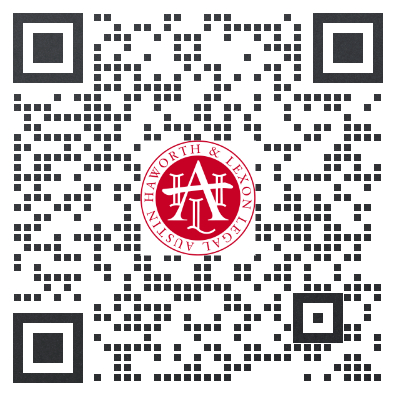Marriage equality
Marriage equality
PUBLISHED: 08, 12, 2017
From 9 December 2017, sex or gender no longer affects the right to marry under Australian law and same-sex marriage will become legal in Australia.
The Marriage Amendment (Definition and Religious Freedoms) Act 2017 amends the Marriage Act 1961 to redefine marriage as 'the union of 2 people to the exclusion of all others, voluntarily entered into for life'.
The Attorney-General’s Department has produced a fact sheet to inform people about the changes.
Same-sex divorce in Australia and overseas
Same-sex couples whose marriages are recognised can access Australia's divorce system, regardless of when the marriage was solemnised. The divorces of same-sex couples who divorced overseas before 9 December 2017 are also recognised in Australia.
Same-sex couples who divorce overseas on or after 9 December 2017 will have their divorce recognised in Australia in the same circumstances as any other married couple.
The Federal Circuit Court of Australia has the jurisdiction or power to deal with dissolution of marriage (i.e. divorce) under Part VI of the Family Law Act 1975.
Marriage Celebrants Program
Updated: July 2018
Marriage Equality: Questions and answers on sex and gender
The Attorney-General’s Department’s Marriage Law and Celebrants Section has provided the following answers to questions about sex and gender from celebrants, their representatives and training providers.
Q1. Does a celebrant need to have the couple provide proof of their gender? [Celebrant]
A1. Marriage celebrants can choose to accept a party’s statement on what their sex and gender is without requiring evidence. As set out in the section 42 of the Act and in the notes section of the Notice of Intended Marriage (NOIM), evidence is only required for date and place of birth, evidence of identity of the parties; and if one or both parties were previously married, evidence of their divorce or death of previous partner.
Q2. What happens when a driver’s licence and a passport have different sex categories recorded? [OPD Panel Provider]
A2. Marriage celebrants can choose to accept a party’s statement on what their sex and gender is without requiring evidence. Accordingly, it is not appropriate to question what sex or gender is recorded in a party’s licence or passport. In relation to the NOIM, a party’s recorded sex does not need to align with their gender identity.
As set out in the Australian Government Guidelines on the Recognition of Sex and Gender (Guidelines on the Recognition of Sex and Gender) individuals may identify as a gender other than the sex they were assigned at birth or may not identify as exclusively male or female. The Guidelines on the Recognition of Sex and Gender also note that there are legitimate reasons people may hold conflicting documents, for example, people who identify primarily as ‘X’ may want to hold a passport in a particular gender to ensure their safety while travelling overseas.
Q3. On the NOIM ‘Party 1’ and ‘Party 2’ is a disconnected term and I think ‘Partner 1’ and ‘Partner 2’ would be much more appropriate. [Celebrant]
A3. The Attorney-General’s Department is undertaking a broad review of the official marriage forms. Terms used in the NOIM are being considered as part of this process. The department will be consulting with marriage celebrant representatives and other stakeholders, including training providers, as part of this review.
Q4. Why do we have Item 1 of the NOIM? [celebrant association representative]
A4. Item 1 of the NOIM includes three identifying options available to each party to a marriage: ‘groom’, ‘bride’ or ‘partner’. It is up to each party to decide which option they want to use to describe themselves. The information provided in Item 1 of the NOIM is used by state and territory registries of births, deaths and marriages to register marriages and issue official marriage certificates. The Registrar is considering whether it is necessary to retain this item in the NOIM as part of the current review into marriage forms.
Q5. Why can’t I use the term ‘partner in marriage’ in the vows? [celebrant association representative]
A5. Subsection 45(2) of the Marriage Act sets out the vows required to be said by each of the parties to a civil marriage ceremony (where the authorised celebrant is not a minister of religion). As part of the legislative amendments that provided for marriage equality, the vows for use in a civil marriage ceremony were amended to expressly provide that parties to a marriage may elect to use the gender neutral term ‘spouse’ in their vows. This term was added as an additional option; the terms ‘husband’ or ‘wife’, or ‘words to that effect’, also continue to be available for use by parties when stating their marriage vows. Under subsection 45(2), marrying couples can make a personal choice about the terms to be used in their marriage vows that best reflect their relationship.
Accordingly, the term, ‘partner in marriage’ falls within the phrase ‘words to that effect’ and can be used in the vows instead of ‘husband’ or ‘wife’ or ‘spouse’.
In July 2018, the Attorney-General’s Department published Guidelines on the Marriage Act 1961 for authorised celebrants (replacing the 2014 version of the ‘Guidelines on the Marriage Act 1961 for marriage celebrants’). Guidance on the words to be used in the vows for a civil ceremony is provided in those guidelines, together with guidance on ‘words to that effect’ which includes a reference to ‘partner in marriage.’
Q6. Given the changes to the Marriage Act where sex and gender no longer play a role in the law, can we remove ‘sex’ from the NOIM? [celebrant association representative]
A6. Item 4 of the NOIM asks a person to identify their sex as female, male or X (the latter includes unspecified gender, intersex or indeterminate). The information provided in Item 4 enables the Australian Bureau of Statistics (ABS) to prepare and publish national marriage statistics. The department is undertaking a broad review of the official marriage forms. As part of the review, we are consulting with the ABS about whether there is an ongoing need to collect statistical information about the sex of the parties to a marriage.
Q7. The fact sheet (Changes to Marriage Ceremony Requirements) states that the descriptor groom can be used by a male party and bride by a female party but does not state the descriptor bride cannot be used by a male party or vice versa. [celebrant association representative]
A7. It is up to each party to decide which option they want to use to describe themselves.
Q8. What if a person does not associate themselves with either male or female, as is now legally permitted – should they only be permitted to use the term partner/spouse? [celebrant]
A8. It is up to each party to decide which option they want to use to describe themselves, including whether they wish to describe themselves as ‘partner/spouse’.
Q9. What if a person changes their gender identity on the day the marriage is to be solemnised? [OPD Panel trainer]
A9. It is up to each party to decide which option they want to use to describe themselves. A celebrant may permit changes to the NOIM at any time before the marriage has been solemnised. The alteration should be initialled by the party changing the information and by the celebrant. The NOIM may not be changed after the marriage has been solemnised. If there is a difference in recorded gender in the NOIM and the marriage certificate after a marriage has been solemnised, the celebrant may wish to send a covering note explaining the change to the BDM when registering the marriage.
Q10. Is it a criminal offence to not record gender correctly on the NOIM? [OPD Panel Trainer]
A10. Section 104 of the Marriage Act 1961 makes it an offence for a person to give a NOIM to an authorised celebrant or to sign it, if, to that person’s knowledge, the NOIM contains a false statement or an error or is defective. If you are concerned that someone is making a false statement on their NOIM, you should draw the consequences of making a false statement to their attention.
The department is undertaking a broad review of the official marriage forms. As part of this process we will also consider the application of criminal offences under the Marriage Act with regard to completing the NOIM.



 1300 91 66 77
1300 91 66 77







 HOME
HOME


